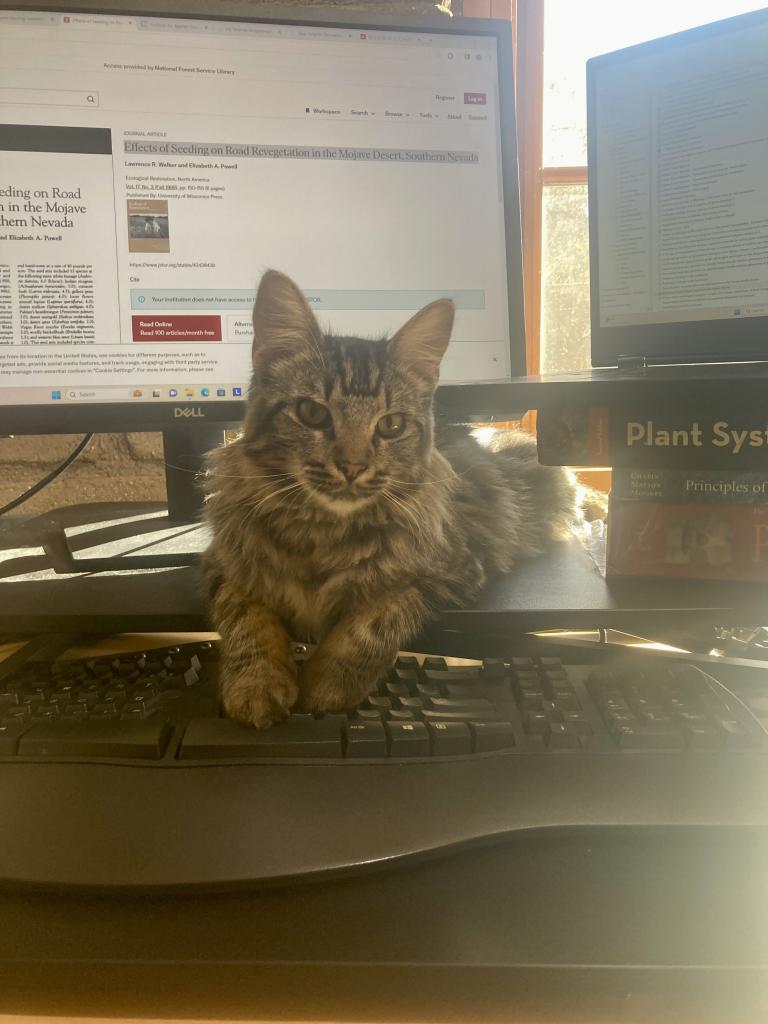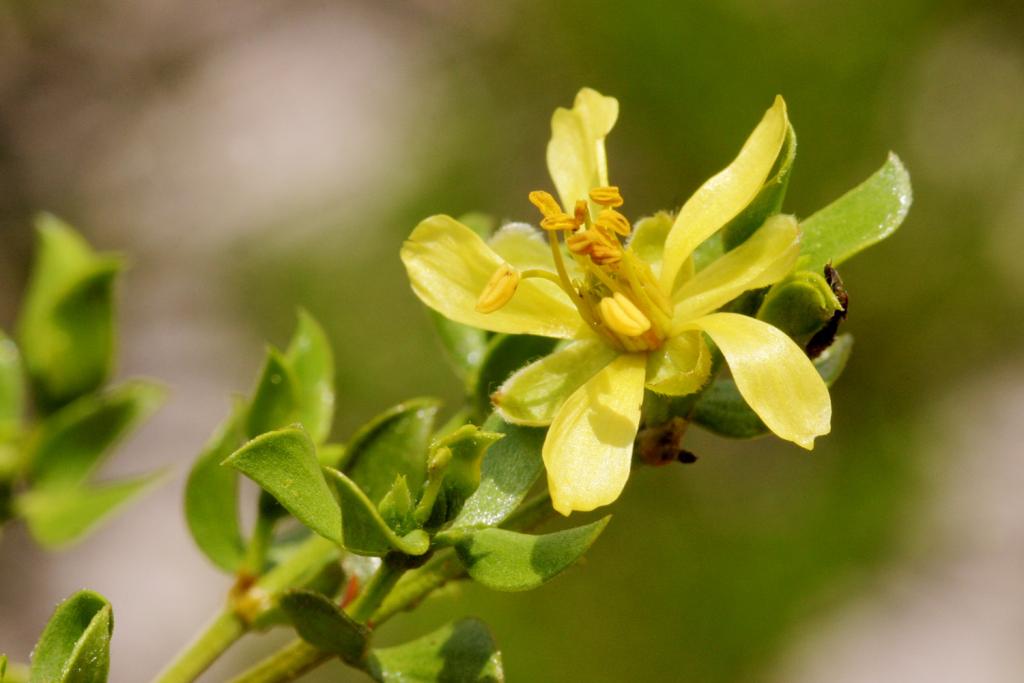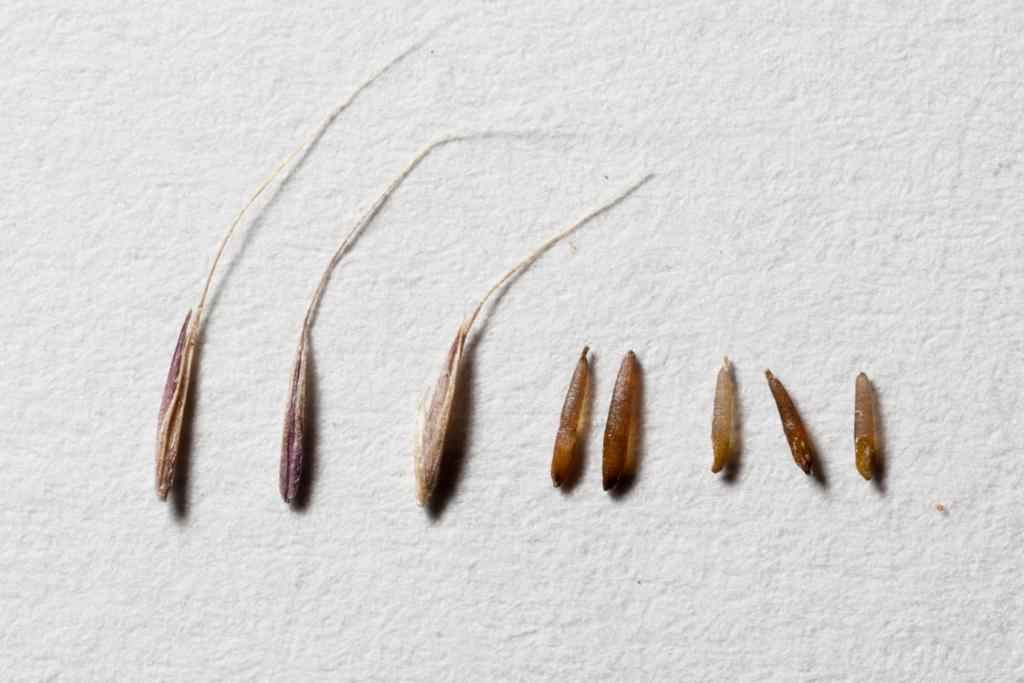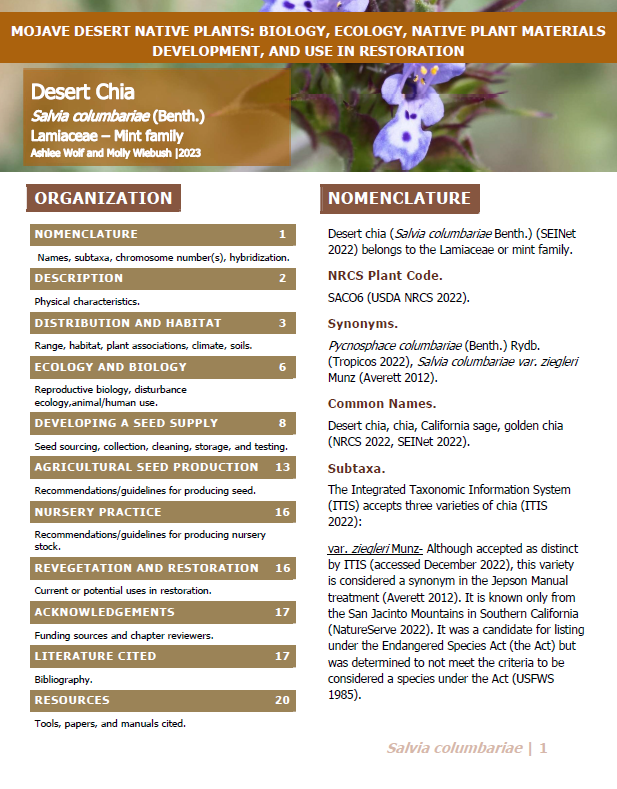By Ashlee Wolf, March 2024
Over the past year, IAE has been developing a guide called Mojave Desert Native Plants: Biology, Ecology, Native Plant Materials Development, and Uses in Restoration. The guide will serve as a resource for native plant restoration in the Mojave Desert Ecoregion (the Mojave). Modeled after Western Forbs: Biology, Ecology, and Use in Restoration, the guide features forbs, shrubs, and grasses for native plant materials development and restoration in the Mojave. Featured species include important food and habitat plants for the federally endangered desert tortoise (Gopherus agassizii) and the guide highlights additional benefits of native plants such as pollinator support, invasive species control, and biodiversity restoration. The Guide is intended to serve as a resource for seed collectors, nursery growers, seed producers, landowners, restoration practitioners, and natural resource managers in federal, state, and tribal agencies. The Guide was funded under a contract with the Bureau of Land Management (BLM), Mojave Desert Native Plant Program. Judy Perkins, Mojave Desert Native Plant Coordinator, was the BLM project lead and provided invaluable expertise and local plant knowledge to make the guide a success.

To develop the Guide, IAE ecologists conducted extensive literature reviews on the Mojave Desert to gather and synthesize biological and ecological information on a wide range of native species. We also interviewed dozens of growers and restoration practitioners with practical and regional knowledge of native plants. These practitioner perspectives were crucial to gathering vital ecological knowledge that isn’t always captured in the formal literature.

During the research process, we came to appreciate that even common plants have unique adaptations and important ecological interactions. Take desert chia (Salvia columbariae), for example. Like its cultivated relative in health food stores (Salvia hispanica), desert chia seeds are highly nutritious for both people and a wide range of seed-eating animals (granivores). For this reason, the seeds have neat strategies to prevent them from being eaten! For example, desert chia seed color often matches the soil color where they grow. This isn’t because the plants know what color the soil is! It is a result of natural selection: seeds that don’t match the soil are more visible and more likely to get eaten, while seeds with protective camouflage are selected over time and become dominant in the population.

Another excellent example is the ever-present creosote bush (Larrea tridentata)—which could easily be taken for granted, due to its ubiquity and reputation as a sometimes unwanted weedy species in desert grasslands. However, it hosts one of the most diverse documented pollinator guilds, with over 100 different species of bees visiting its blooms, including at least 22 specialist bees that only feed on creosote bush.

In addition to developing a deeper understanding of Mojave native plants, we were continuously inspired by the people that work to grow and restore them. In May of 2023, our Arizona-based ecologist, Ashlee Wolf, made a trip to southern California to meet native plant growers in person and visit their facilities. Our trip included stops at Joshua Tree National Park, the Mojave Desert Land Trust, Victor Valley College, and the Living Desert Zoo and Gardens. These organizations and their staff, among many others, are working from the seed to the ecosystem level to understand and restore Mojave desert native plant communities.

IAE staff who contributed to this guide included Ashlee Wolf, Scott Harris, Melanie Gisler, Molly Wiebush, Sophia Goss, Casey Hensen, Cierra Dawson, Brooke Morrow, and Katy Silber. It takes a village! We hope that the information presented in the Guide will help inspire and inform native plant materials development and restoration in the Mojave Desert. The full Mojave Desert Native Plants guide will be published on the BLM Ecoregional Programs website this spring.
